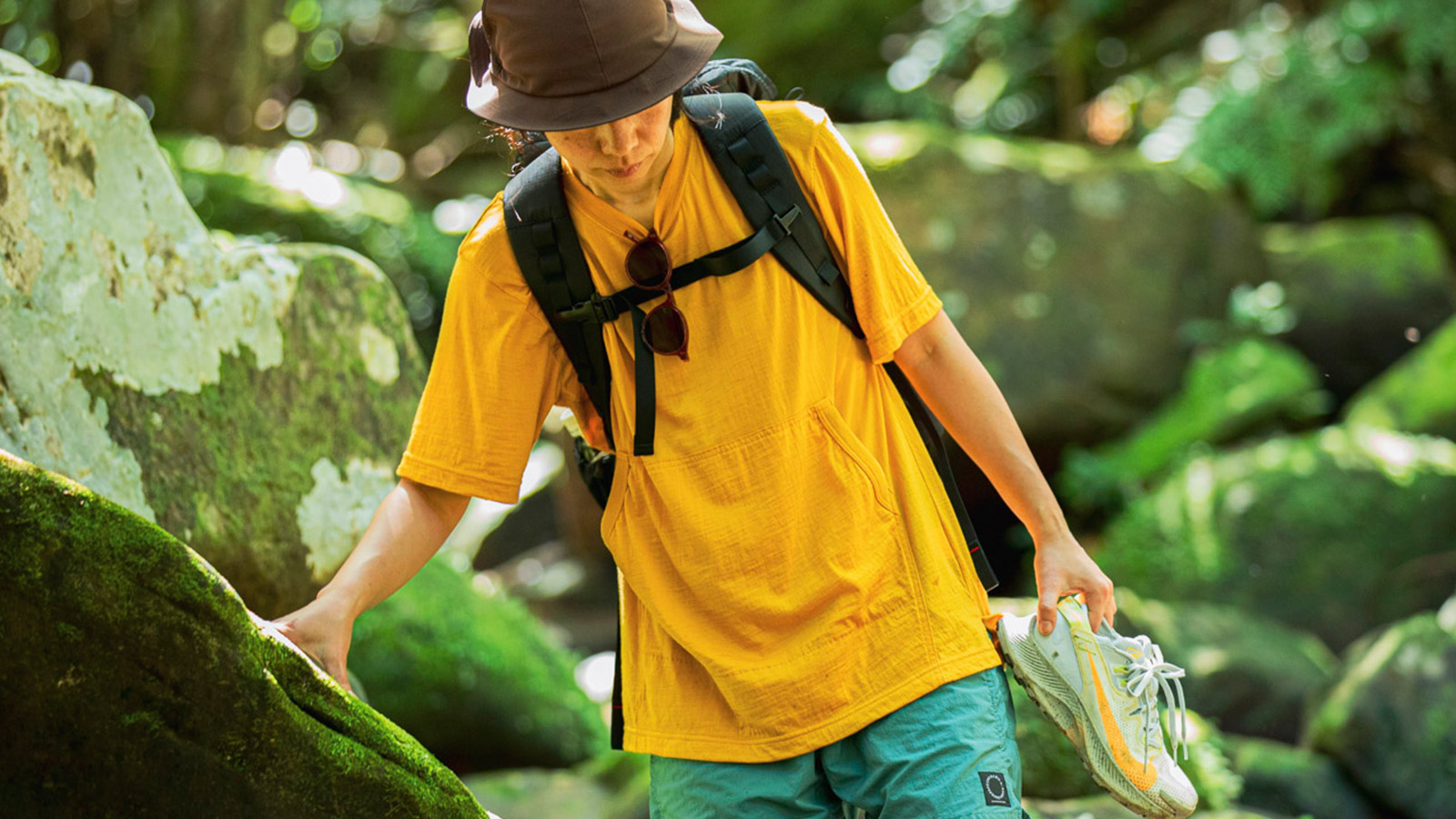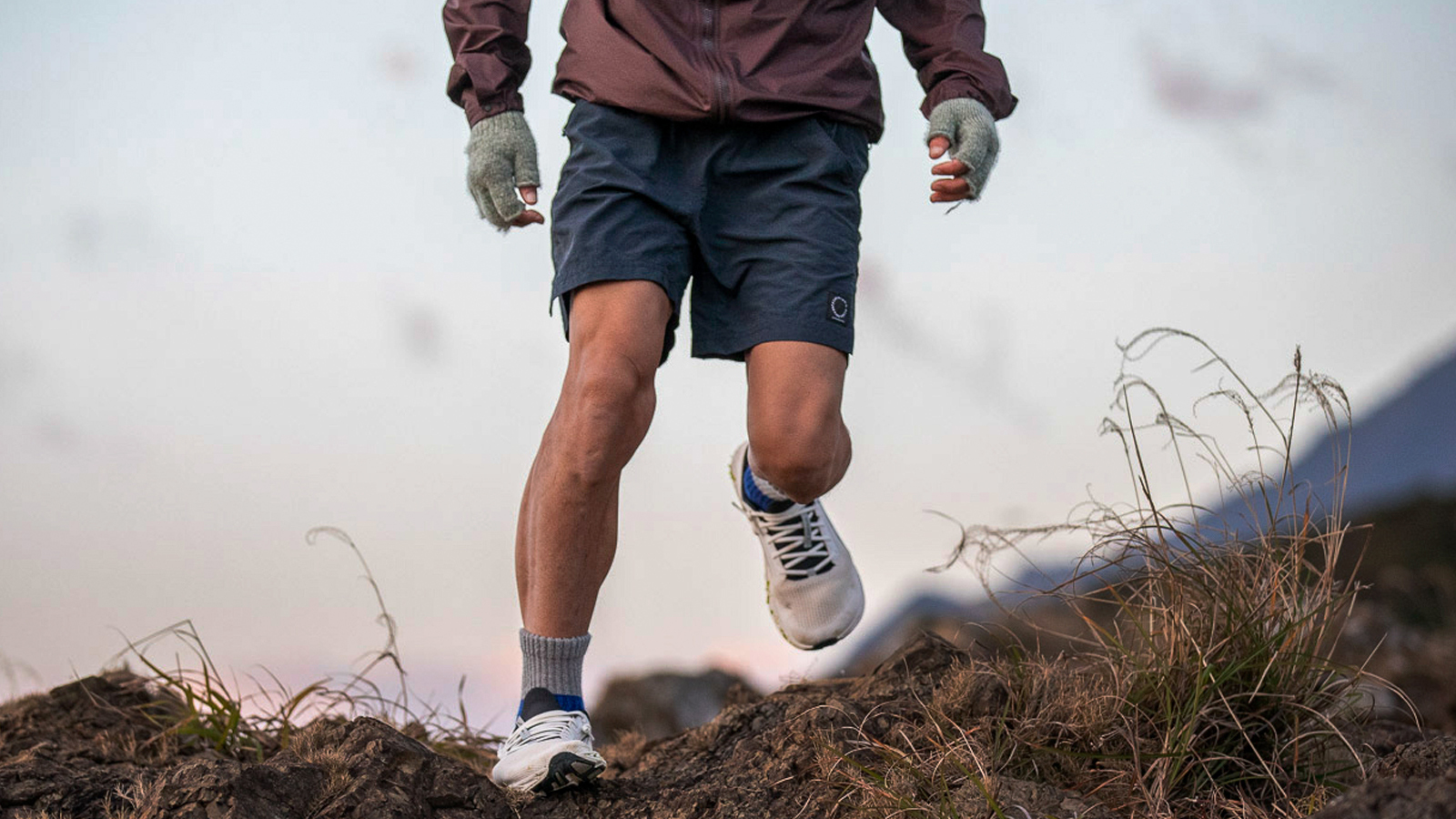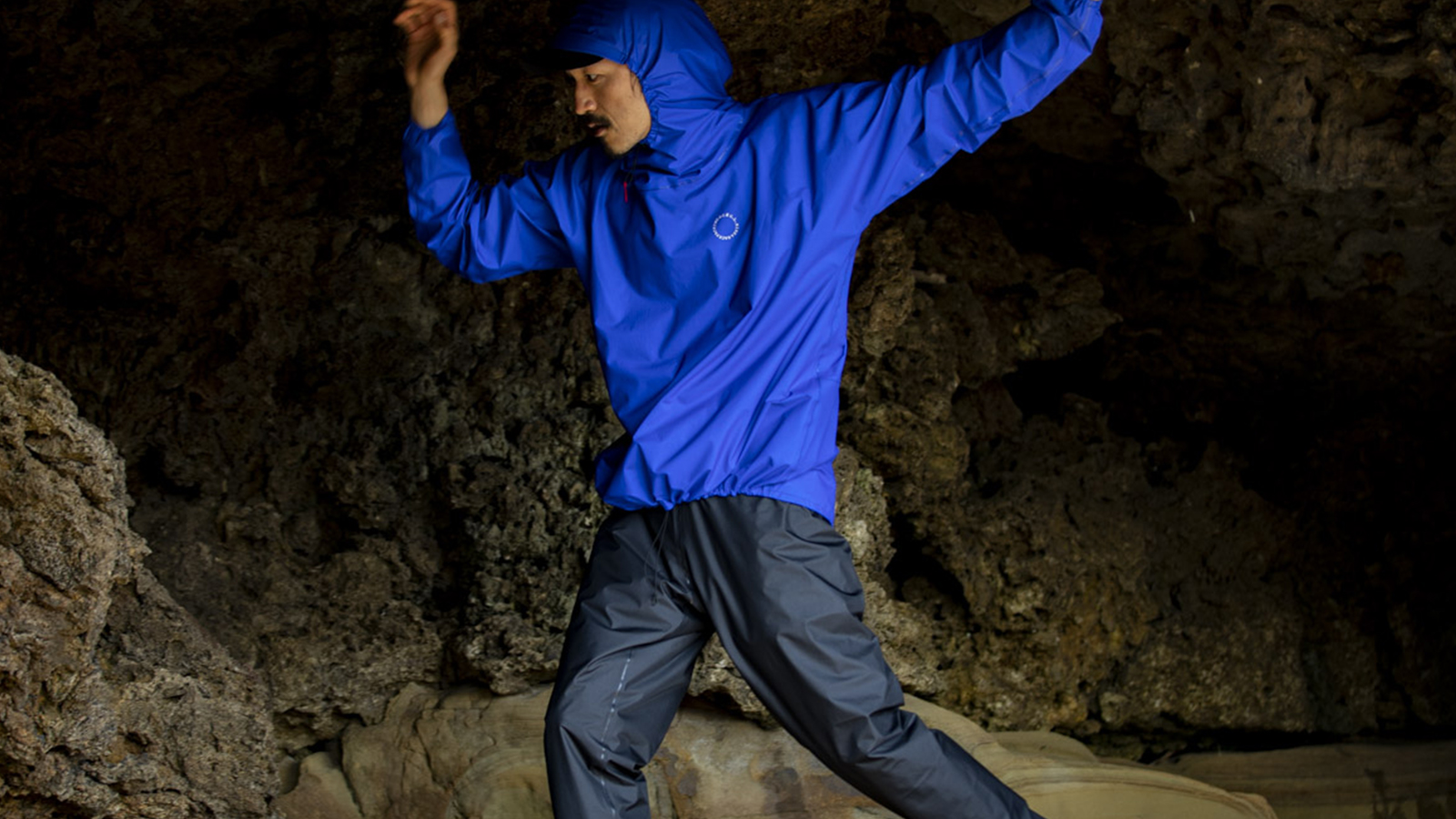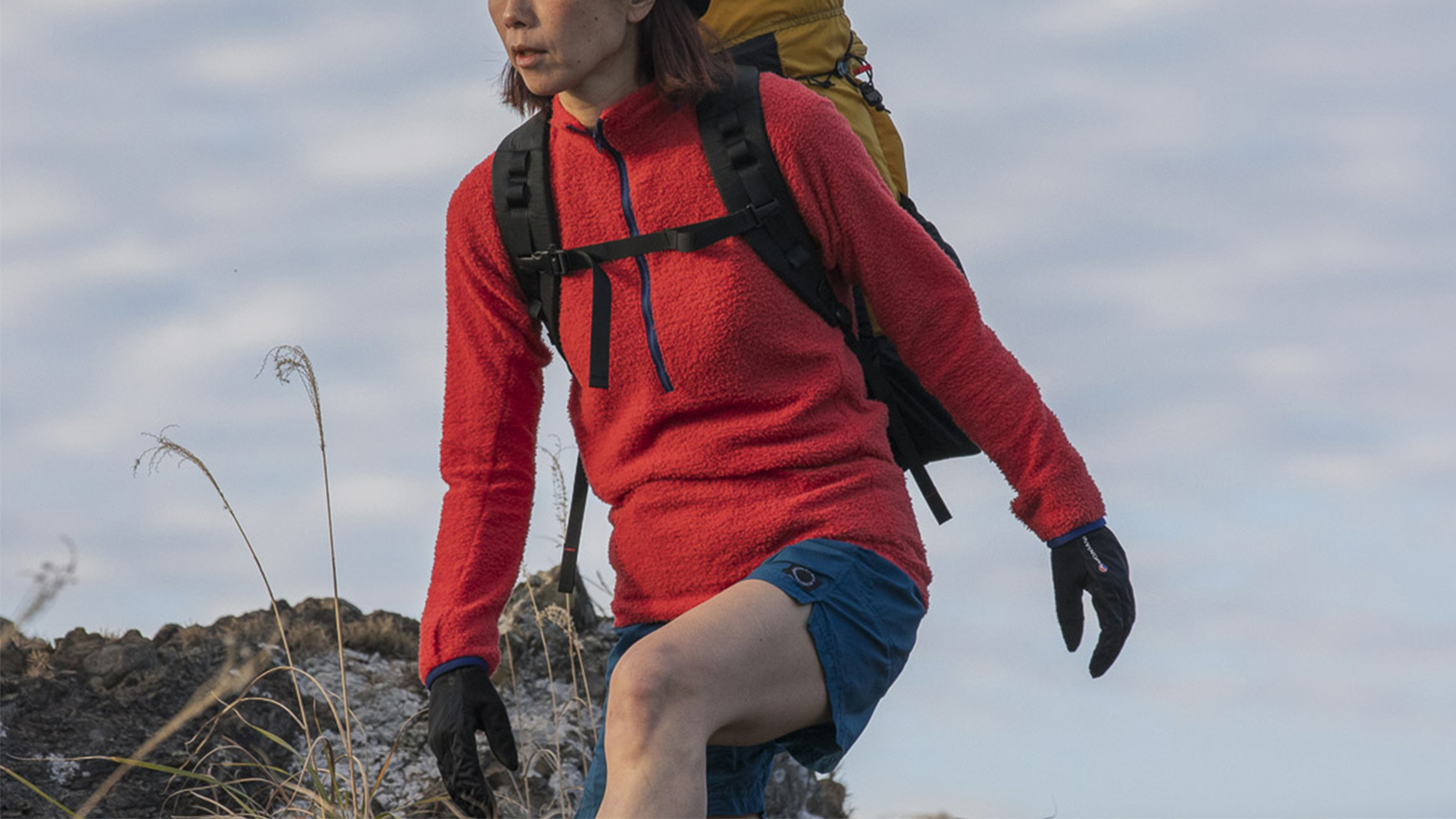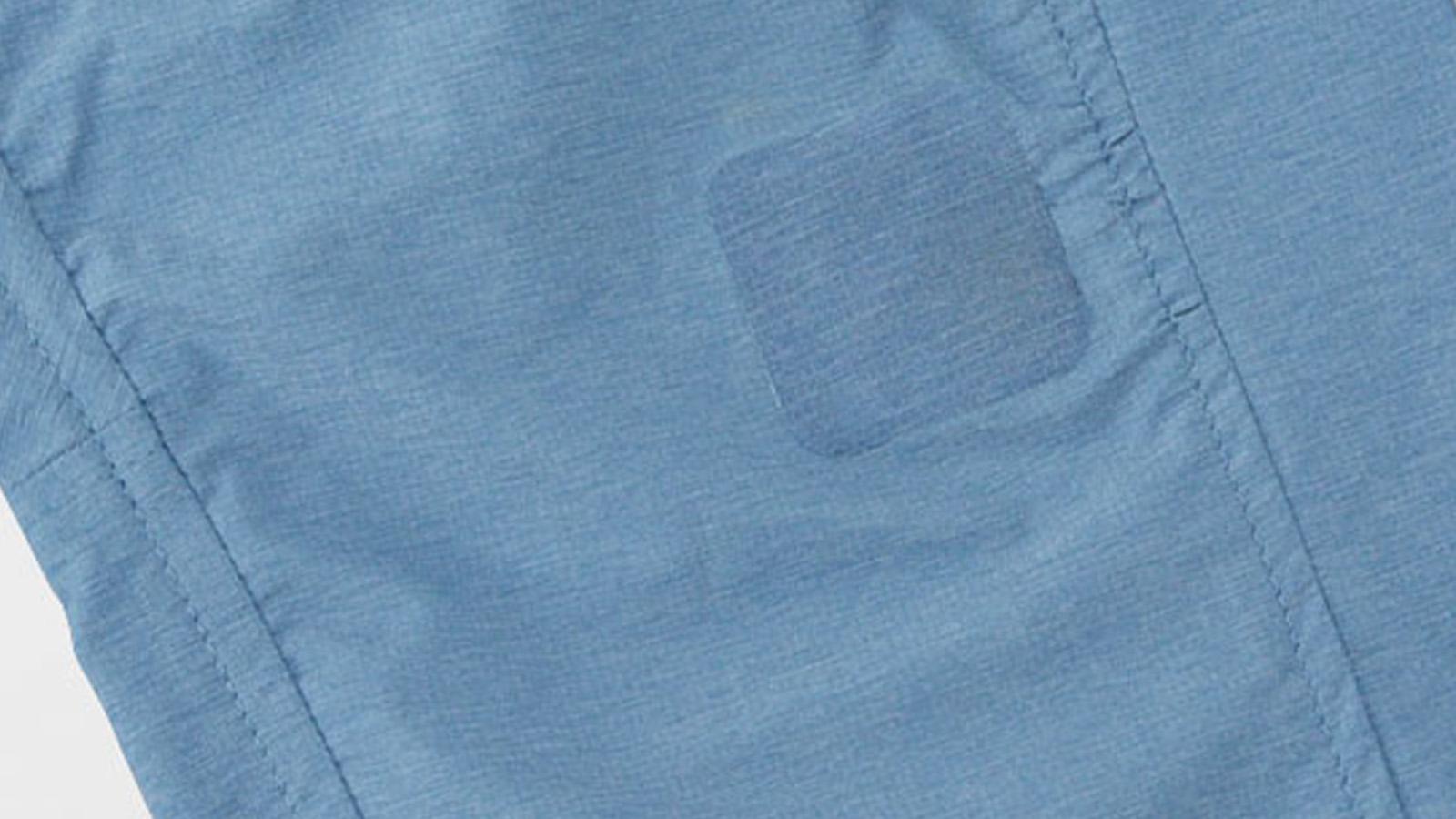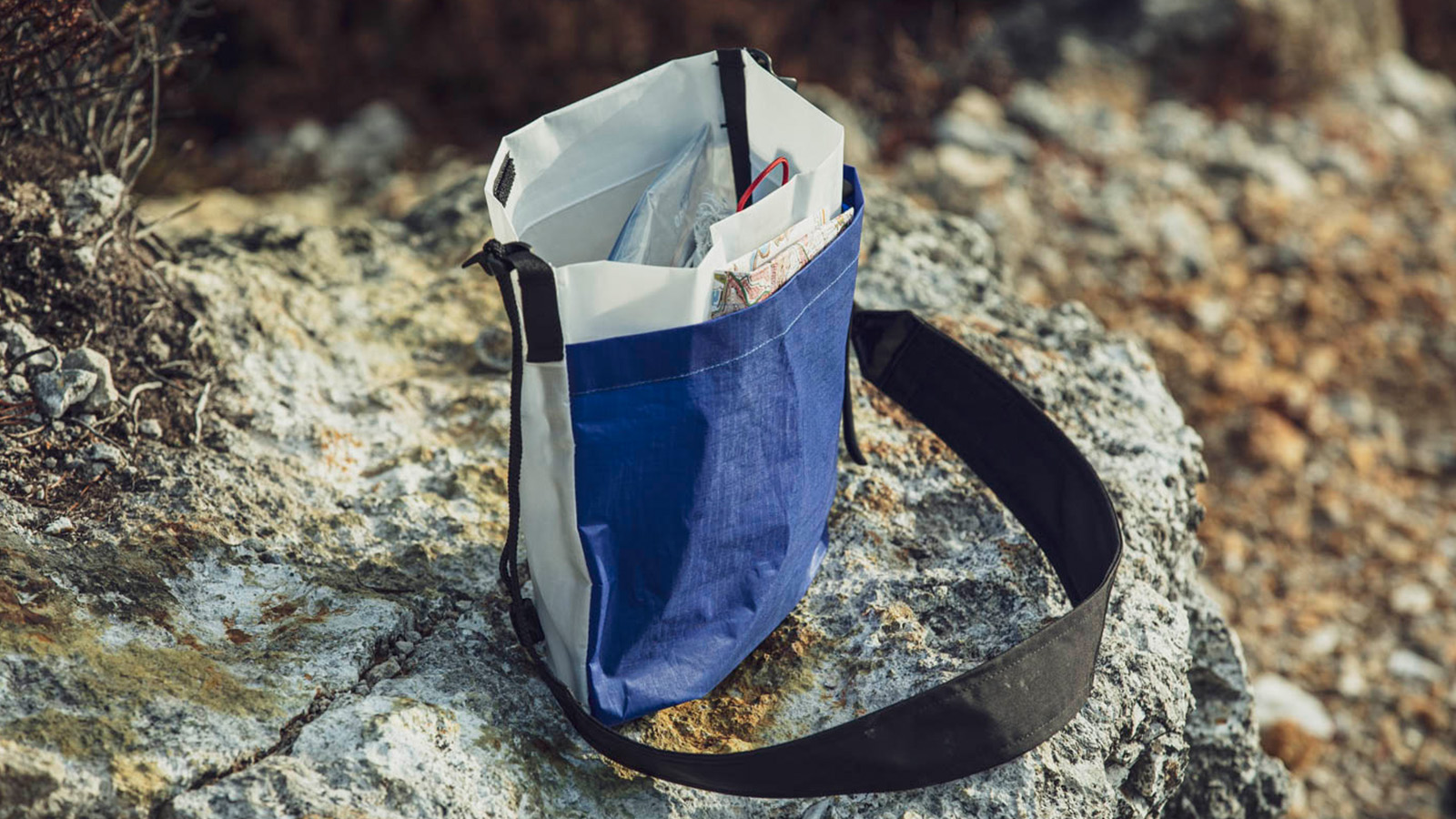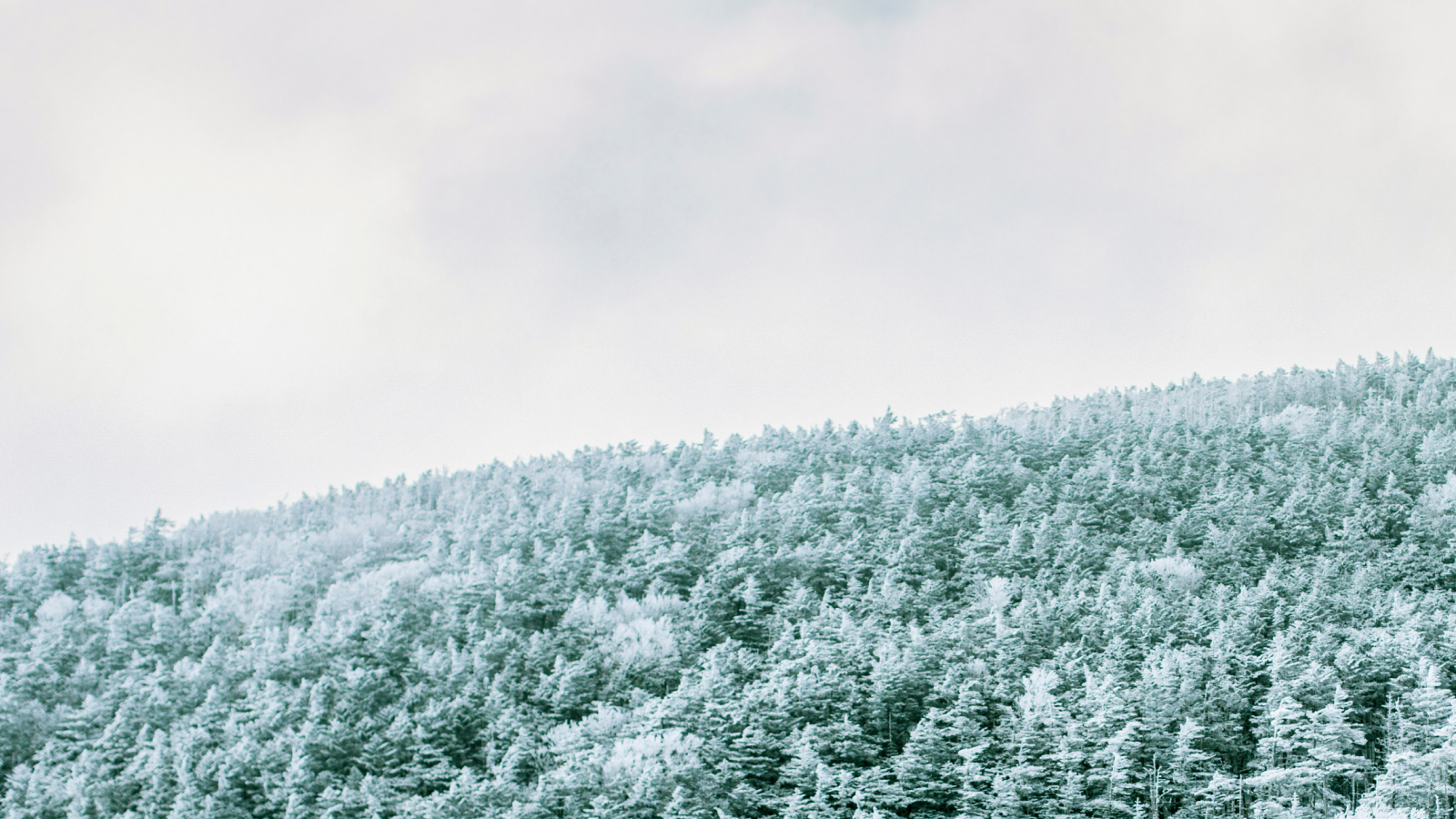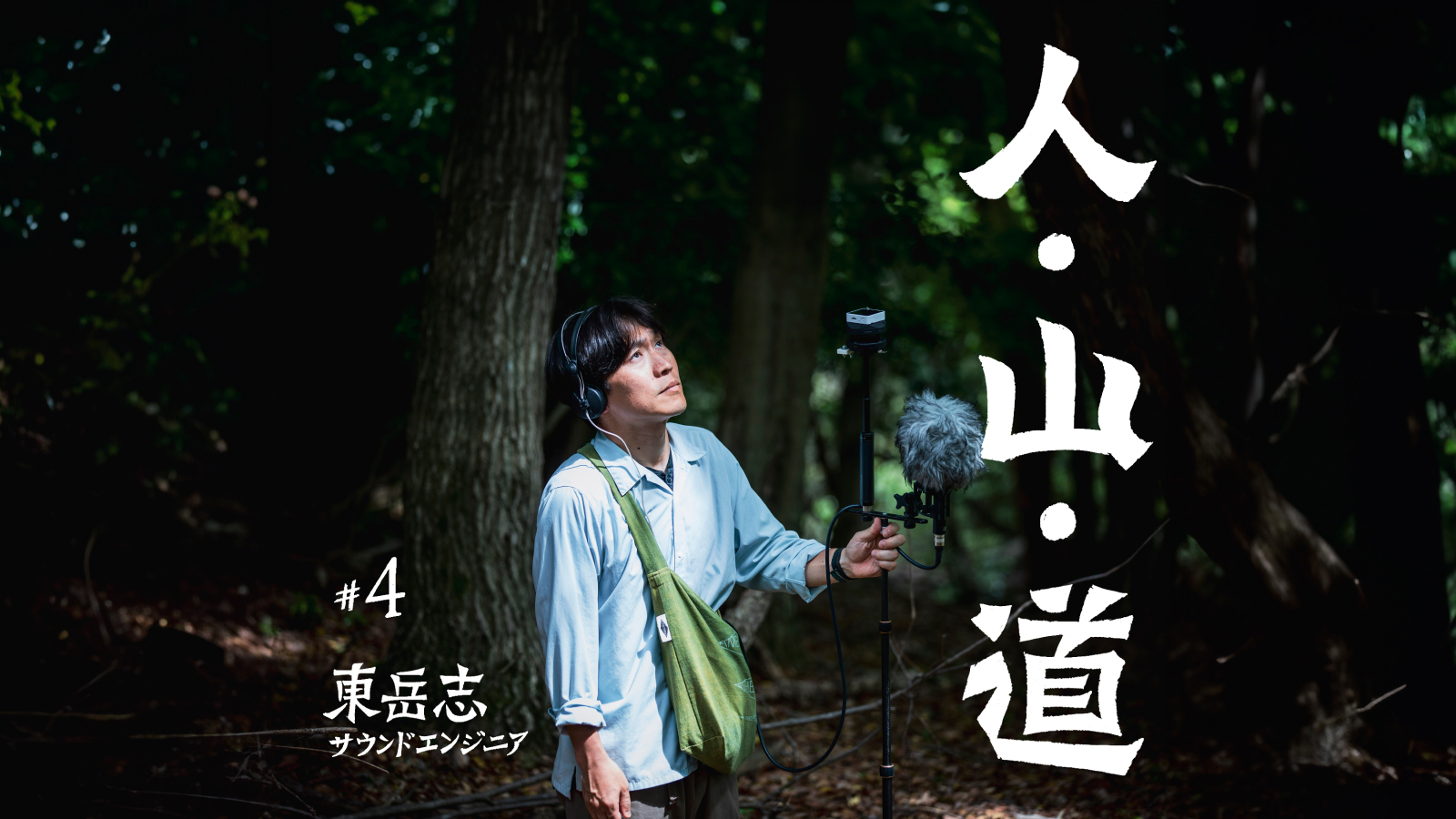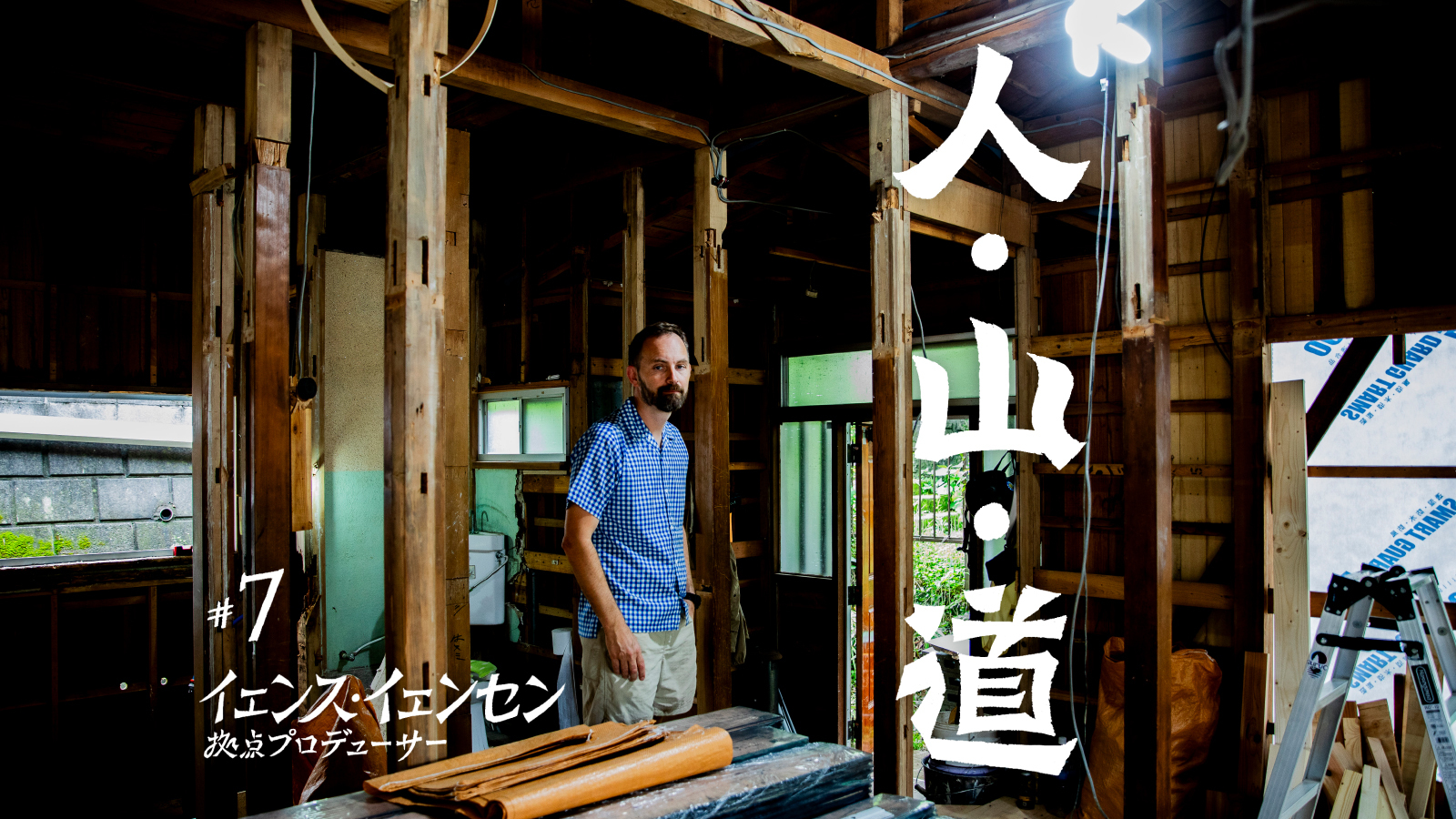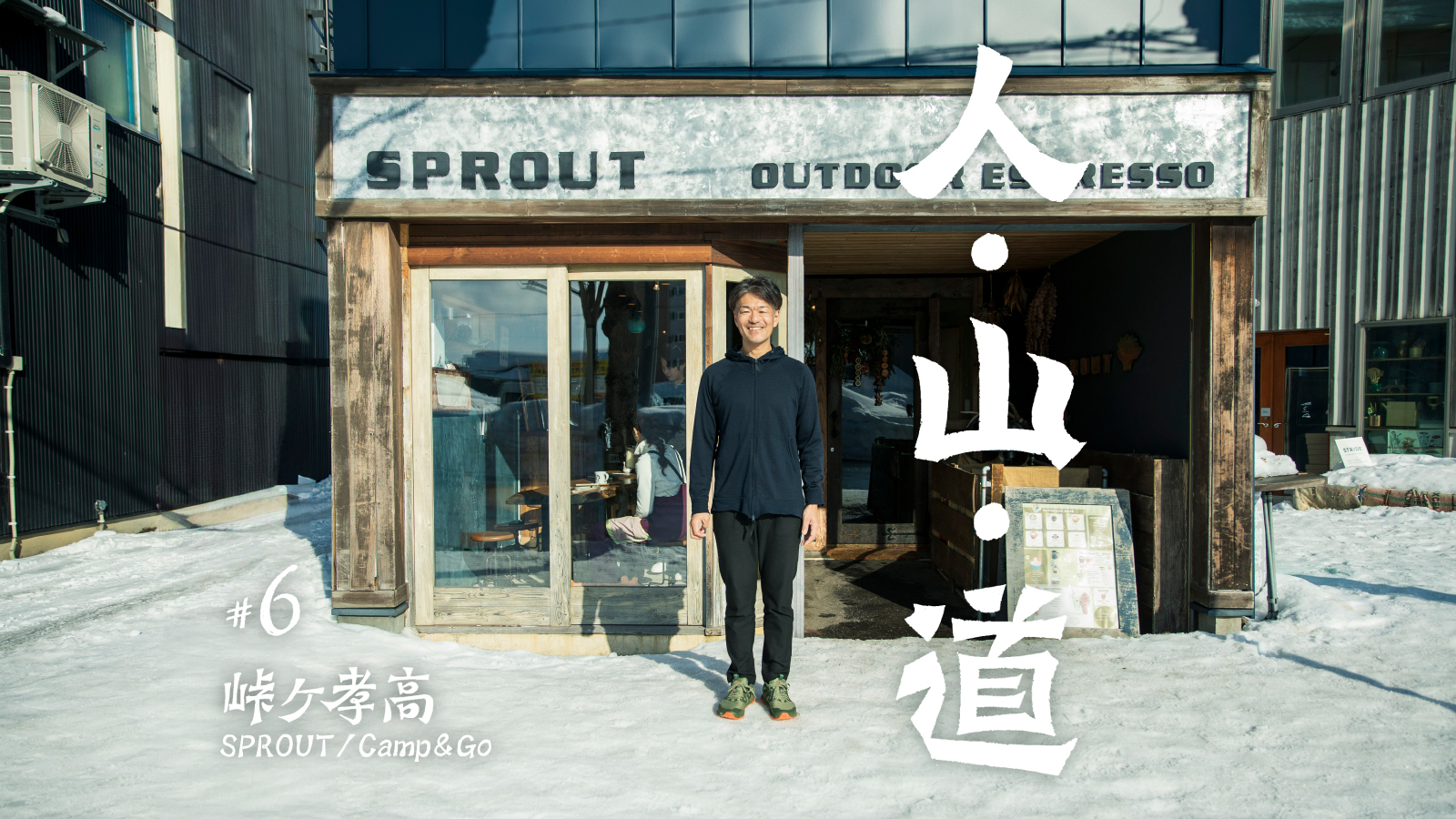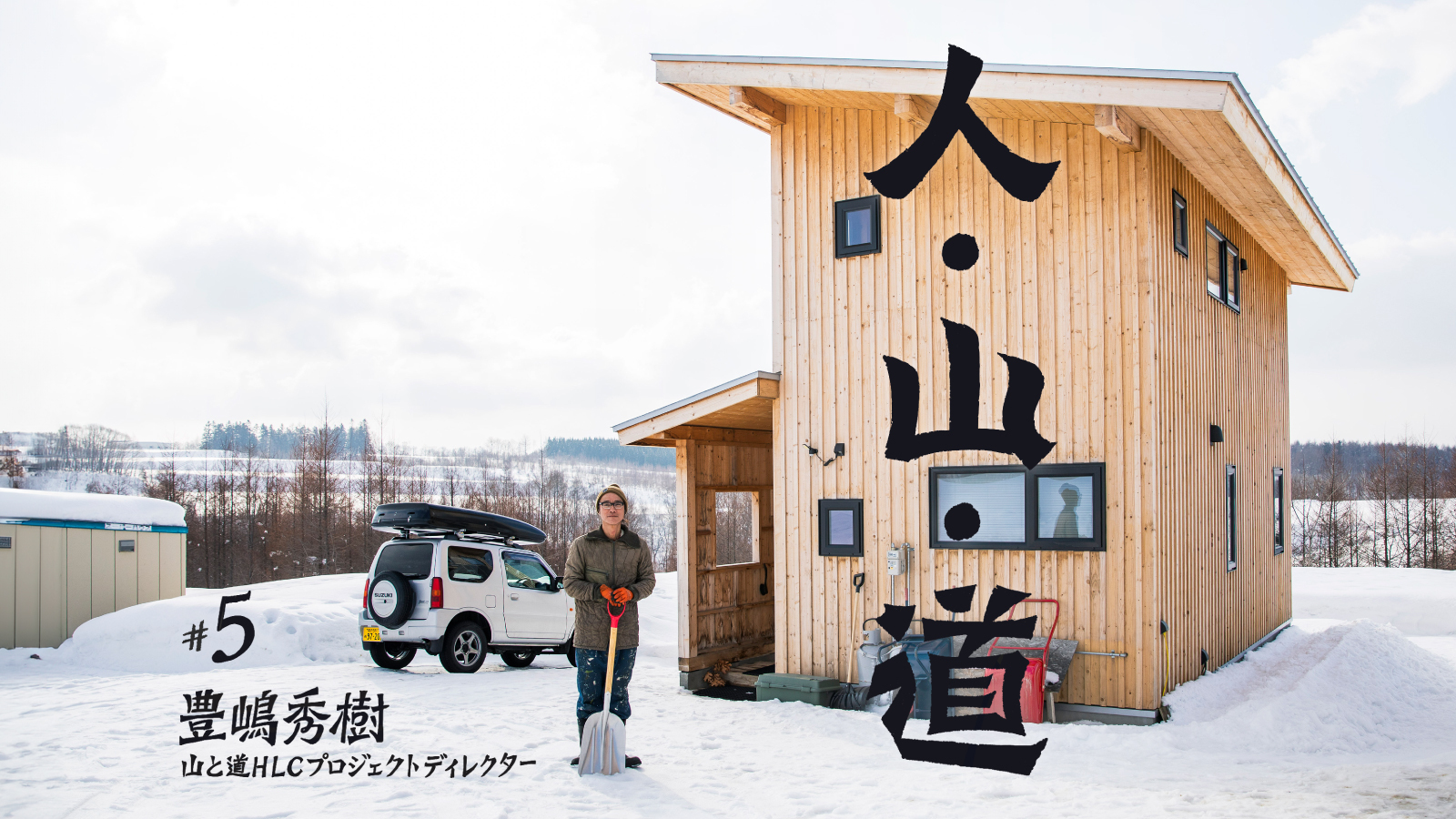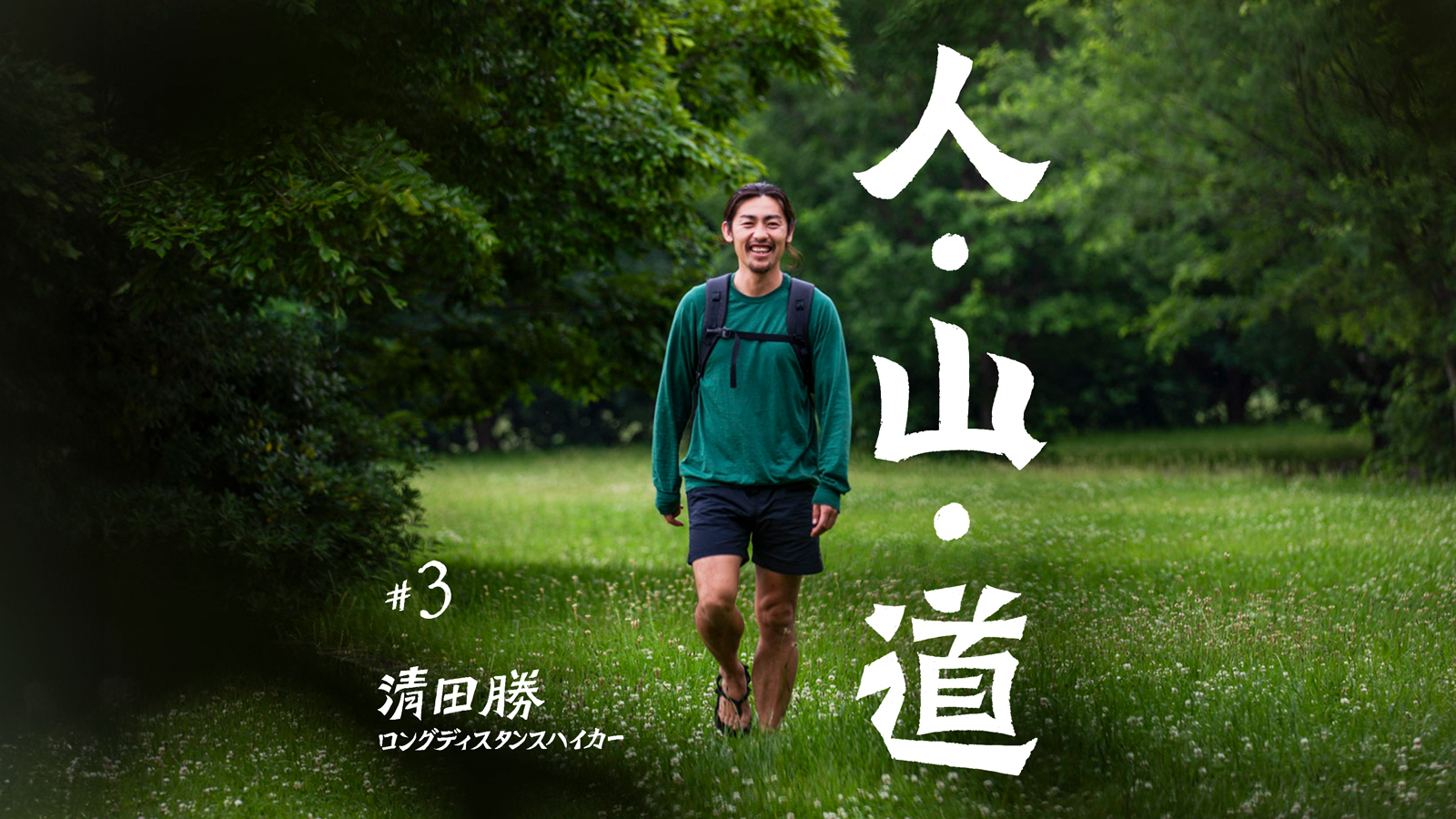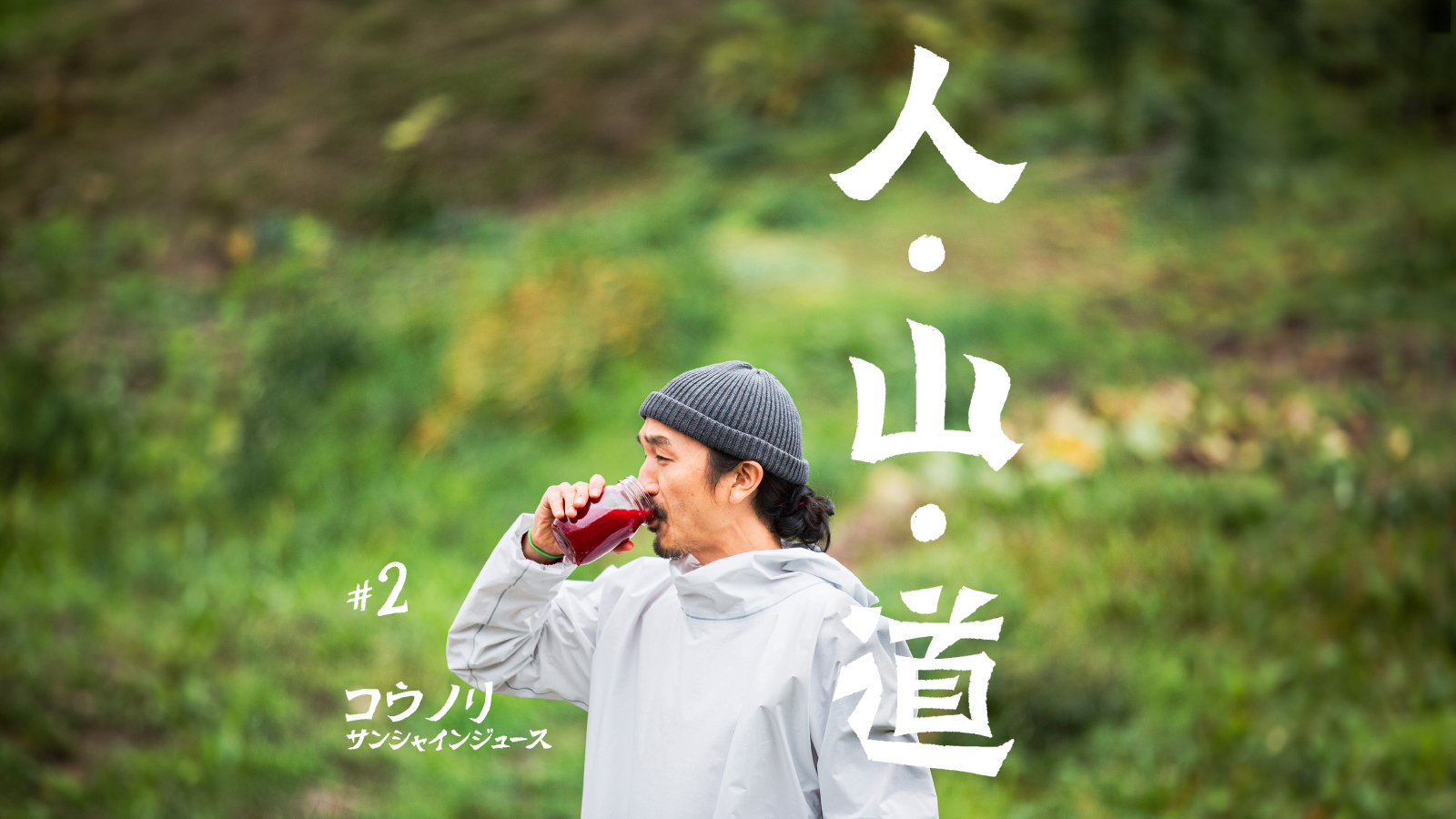#7 Jens Jensen
Editing/Photography: Masaaki Mita
#7 Jens Jensen
Editing/Photography: Masaaki Mita
In People, Mountains, Paths: The UL Way, we interview artists, designers, hikers and entrepreneurs whose lives and work intersect with Yamatomichi. We ask them how they chose the path they walk and the things they carry with them ー a theme that is at the core of the ultralight hiking ethos.
Our seventh guest is Danish-born Jens Jensen, who collaborates with Yamatomichi as a “place maker". He's a master of DIY renovations, having worked on his own home, workplace and camper van. Initially, he helped Yamatomichi with overseas branding and communications, but before long he was applying his carpentry skills to planning, building and designing Yamatomichi's facilities around Japan.
Building a retreat
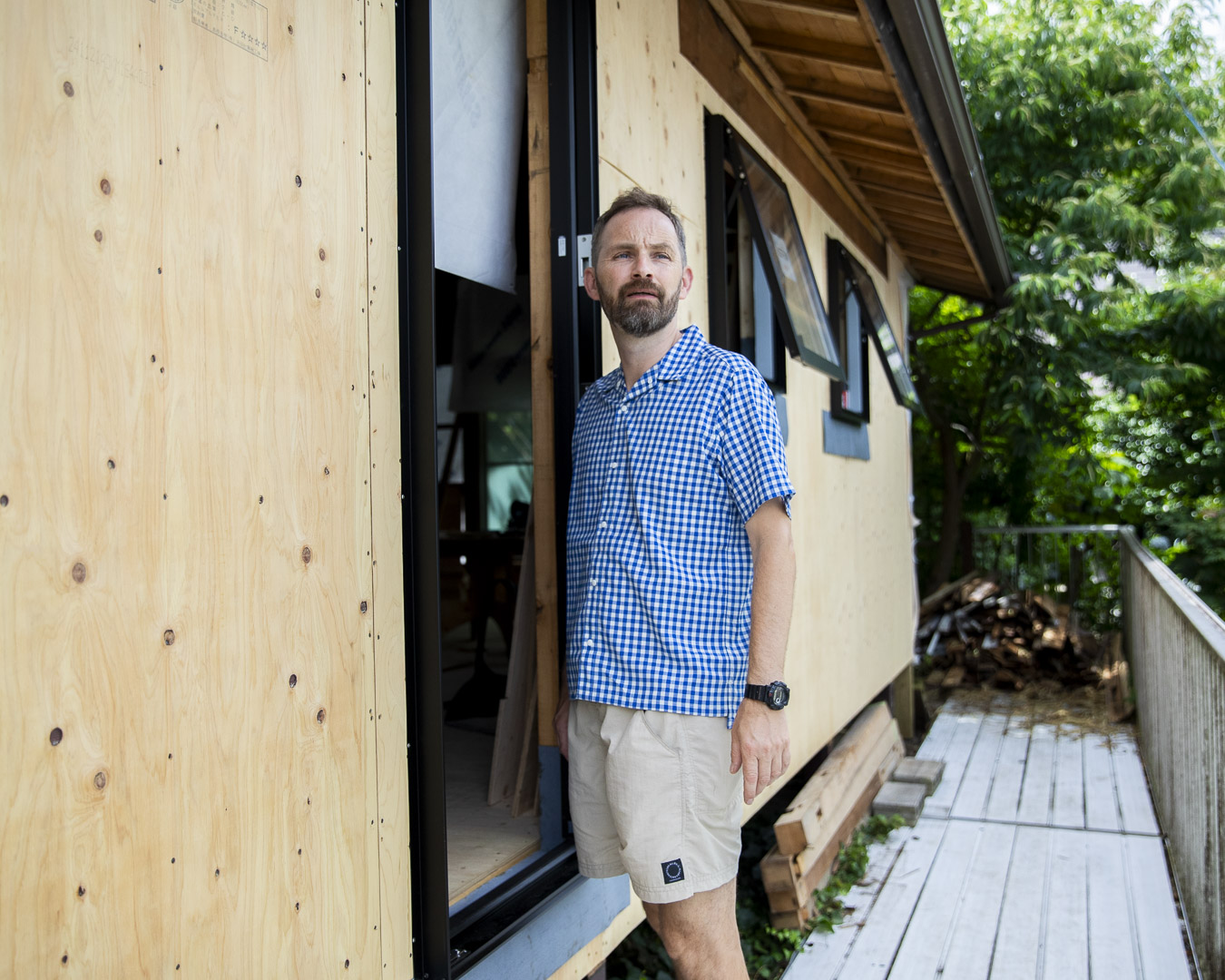
Jens at Kajiwara Sanso, in Kamakura
The old, single-story house on the hill in the coastal city of Kamakura wasn’t exactly falling apart. But it needed a lot of love to become livable again. The owners had built the place in the 1970s, on a steep footpath leading to a park atop a small mountain, but had moved out years earlier. There was no insulation, the kitchen was in bad shape, and the stucco walls were peeling off in places. Inside, it felt dusty and grim, and a thicket of weeds had taken over the yard.
It was a fixer-upper, to put it mildly. Most house hunters wouldn’t have bothered. Too much work to renovate, too far from the center of town, too inconvenient for a car-owner.
But Jens Jensen ー Danish-born journalist, producer, DIY builder and longtime Kamakura resident ー saw its potential. From the moment his wife, Mariko, brought the property listing to his attention, it wasn’t hard for Jens to imagine how to transform this tucked-away house, surrounded by a thicket of trees a short walk from Genjiyama Park and Kuzuharaoka Shrine. And he knew just the person who would share his vision: Yamatomichi’s founder, Akira Natsume. “He loved it, and decided to purchase it,” recalls Jens.
This autumn, Jens’s six-month renovation of the house ー Kajiwara Sanso (sanso means mountain villa) ー will be finished. Yamatomichi plans to use the 72 sq m house for off-site staff meetings and as a guesthouse for out-of-town friends. Its location, about 2.5 km (30 to 40 minutes hiking distance) at the end of a trail from Yamatomichi Laboratory, the company’s Kamakura headquarters, was one of the many things that appealed to Akira. “He’d been talking about having a place for friends and family and for off-site meetings for a long time,” Jens says. “The Yamatomichi office is crammed now. For off-site meetings, they now rent a space at a temple.”

Building partnership
Kajiwara Sanso is the latest DIY building revamp that Jens has worked on for Yamatomichi. The projects, ranging from the brand’s Laboratory and retail shop in Kyoto to its backpack factory in Toyooka, Hyogo prefecture, share a similar backstory: an old building that others might have overlooked or torn down creatively repurposed on a modest budget.
For Jens, ultralight hiking’s MYOG* spirit is a vital element in his collaborations with Yamatomichi. “I love the ultralight hiking concept of making the most with what you have,” he says. “In most renovation and homebuilding in Japan, people use plasterboard and paint it or cover it with wallpaper. I like to use materials that don’t require that kind of finishing, or if I paint, it will be a clear coating just for protection, because I like to use materials that speak for themselves.” It also costs a lot less. “I prefer simple solutions. Nothing that’s unnecessary gets added. Mostly because I’m used to building stuff on my own,” he explains.
*MYOG (“make your own gear”) describes how pioneering ultralight hikers crafted or modified their own equipment to suit their needs back when there wasn’t much lightweight gear available.
Editor, designer, renovator
Jens first met Akira in 2017 for a magazine story about Kamakura. As Japan editor of London-based Wallpaper* magazine, Jens had traveled around the country writing about art, architecture, design and craftsmanship. But he was eager to find ideas closer to home. “I was doing a story on the city where I live and was looking for interesting creative people,” he says. Ultralight hiking was still relatively new in Japan, and even Jens, who had done his fair share of camping, didn’t know that much about it. Even so, he was impressed by the brand’s lightweight, meticulously designed, well-made gear, and its philosophical underpinnings.
That conversation eventually led Akira to ask Jens for help producing an English-language version of Yamatomichi’s website and polishing the company’s branding. But it wasn’t until an invitation to hike with the Yamatomichi team around Oze National Park, a 37 sq km area of mountains, lakes and wetlands north of Tokyo, that something clicked for Jens. “Wearing their gear, sleeping under a tarp ー it was all new to me. But I finally understood what ultralight hiking was,” he says.
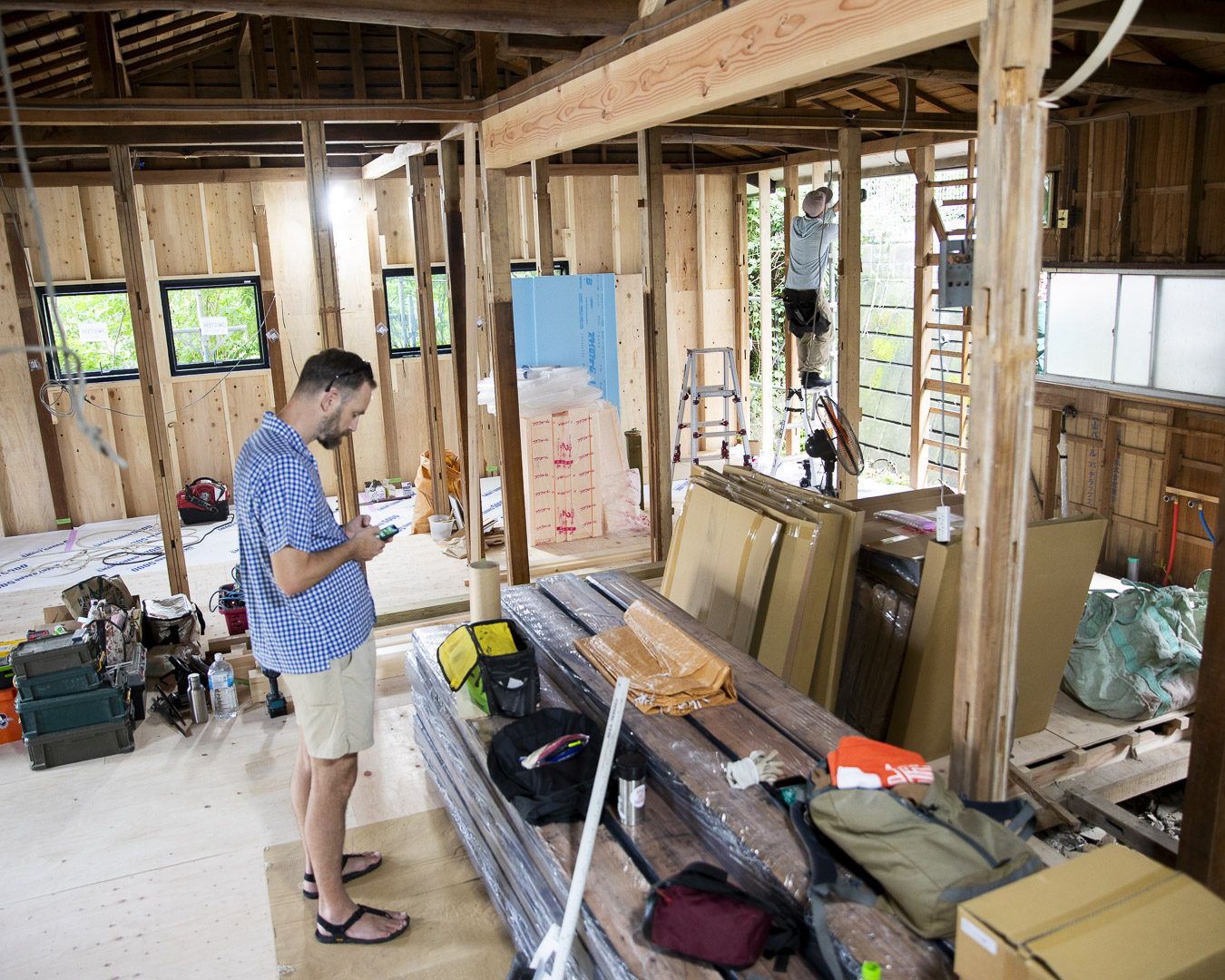
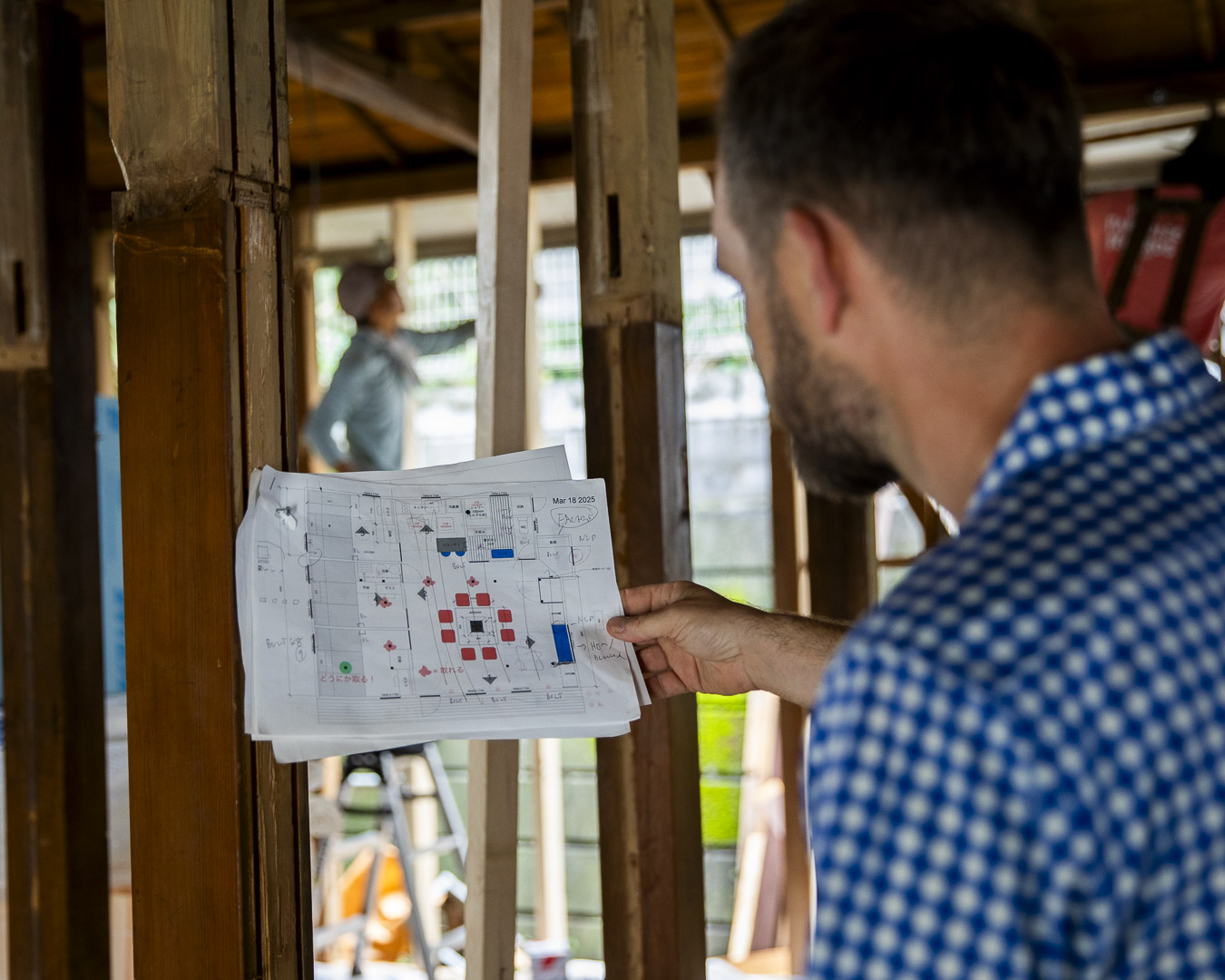
Kajiwara Sanso was an old single-family house. Jens left the foundation, pillars and roof intact, but nearly everything part was rebuilt.
He saw firsthand how the MYOG mindset fit into the ultralight movement. To Jens, it felt very familiar: When renovating old buildings he was constantly having to make things to solve small problems that arose. He’d completed his first renovation around 2008, when he and his wife gave their Tokyo apartment a makeover. In 2013, he finished gutting and refurbishing a house in Kamakura ー a project that he devoted weekends to for four years while working as a public relations and commercial promotion staffer at the Danish Embassy in Tokyo ー and worked on several other home renovations after that. Friends who heard about his avocation asked him for advice and help, which is how he ended up designing and building the interior of a friend’s bakery and a two-story after-school center for children.
DIY for Yamatomichi
Five years ago, Akira mentioned to Jens that Yamatomichi had outgrown its office. Shortly afterwards, Jens drove past a large, empty building in Kamakura for rent ー formerly a motorcycle shop ー and suggested that Akira have a look. The building became the first of Jens’s DIY projects for Akira: Yamatomichi Laboratory.
Three years ago, Jens came across an unoccupied street-front office in Kyoto’s Gojōrakuen neighborhood, formerly a red-light district. The space ー two two-story wooden row houses that had been joined ー was the perfect size for Yamatomichi’s Kyoto shop (opened in 2023). Nara-based designer Yoshiaki Nagasaka, who runs Hitotomori, drew up a plan and Jens took on the role of project manager. “I like to save buildings,” he says. “The Kyoto space was also two minutes from the coolest public bathhouse, Umeyu.”
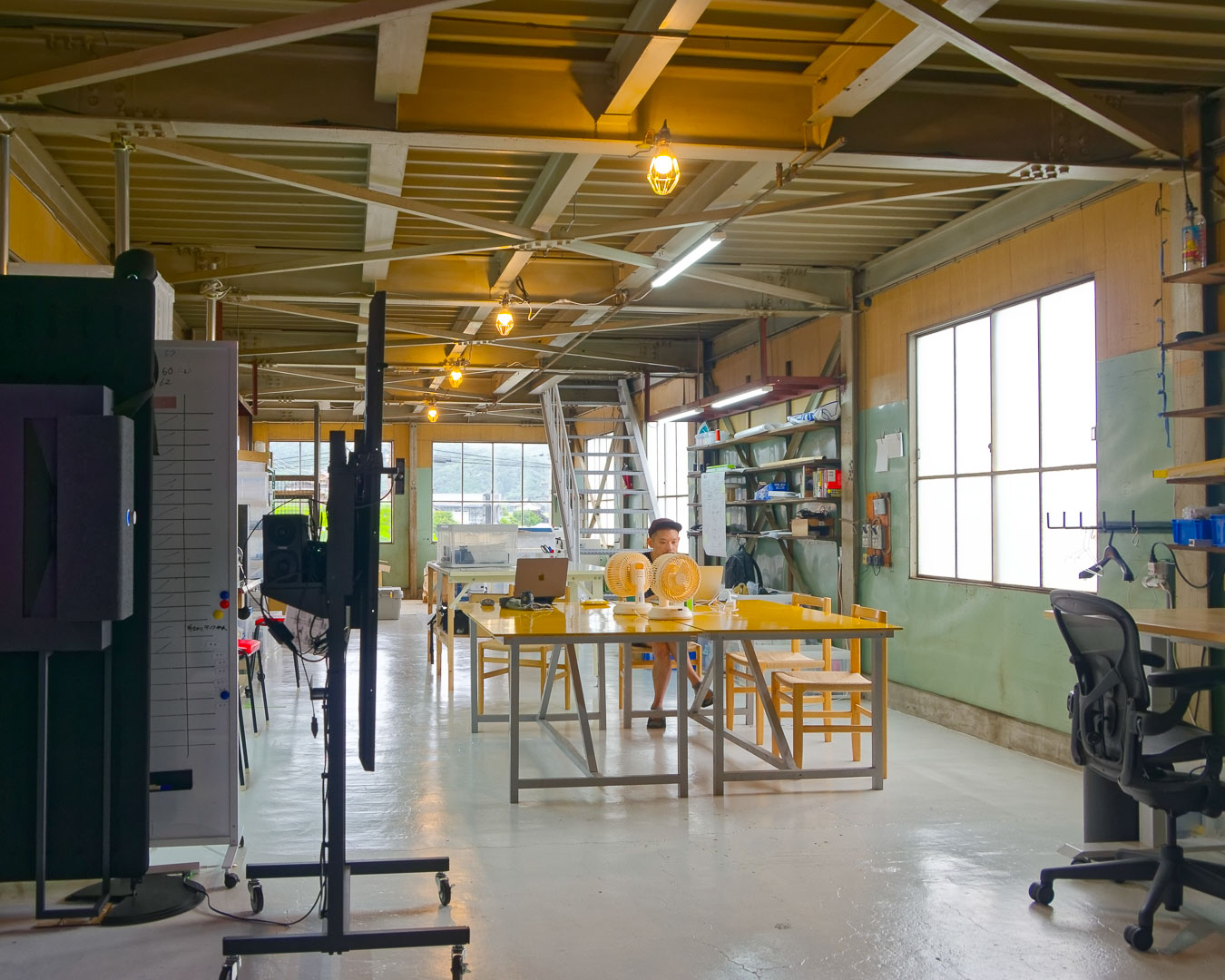
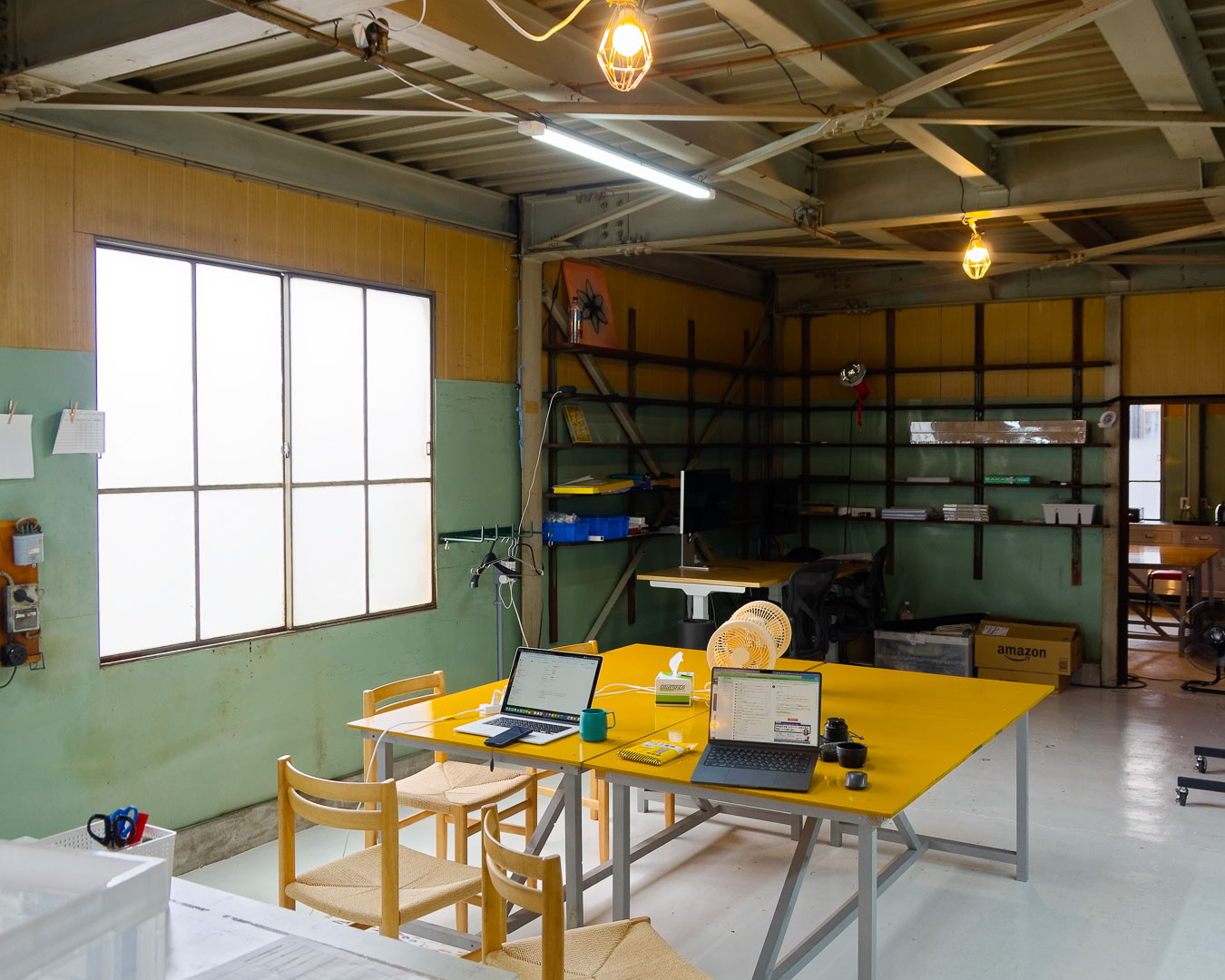
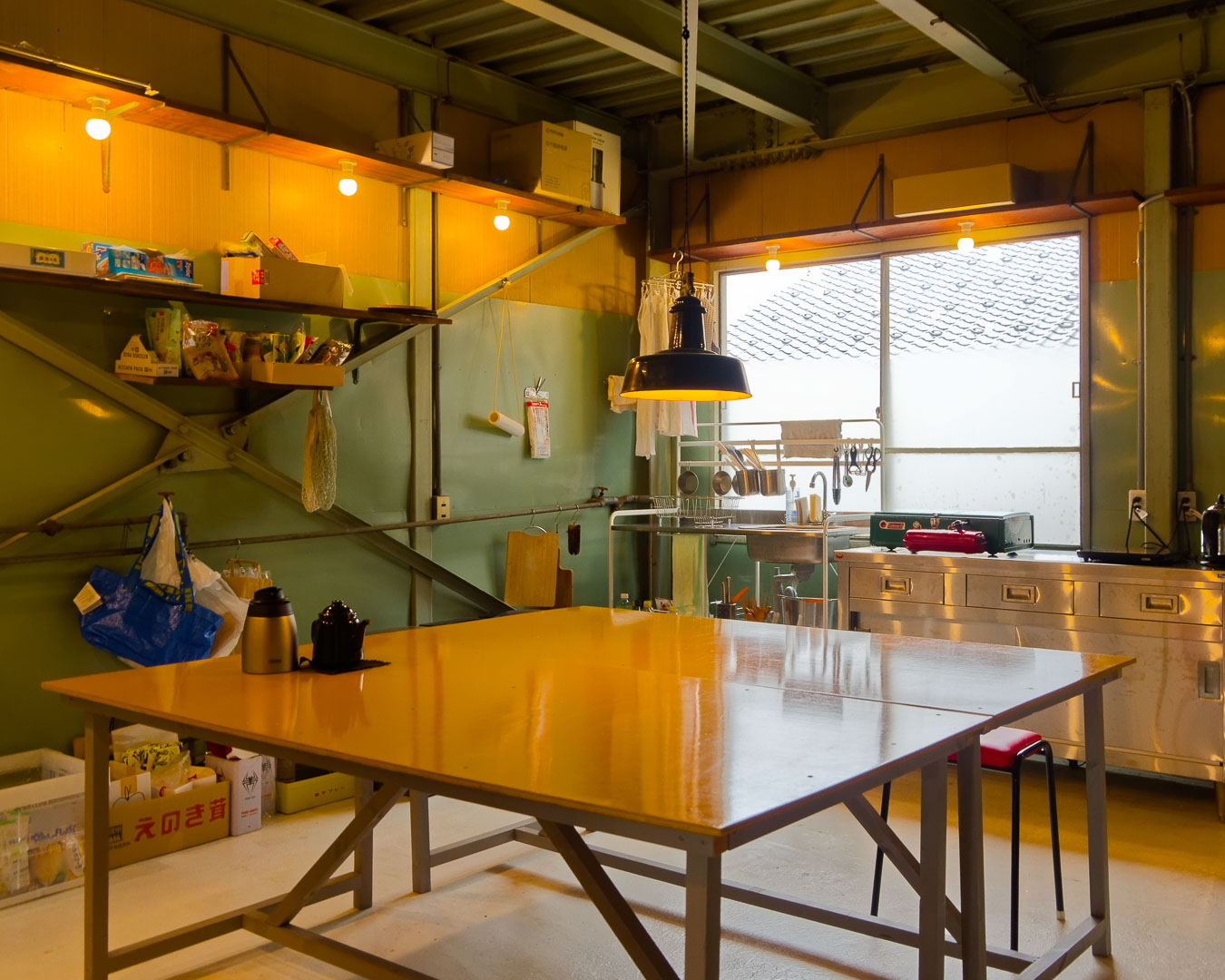
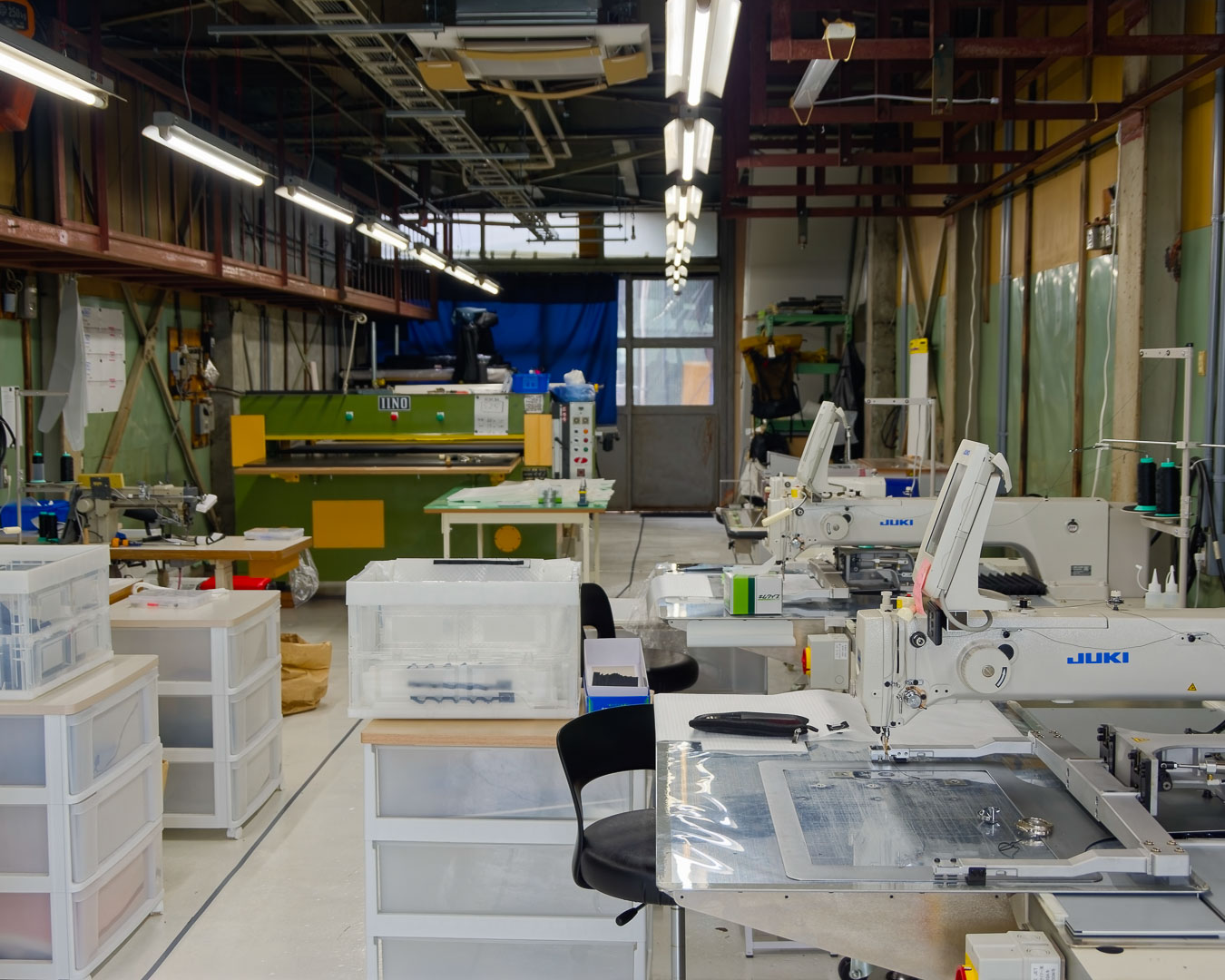
Yamatomichi’s Toyooka Factory, in Hyogo prefecture, was a 70-year-old derelict building that Jens renovated. (photo credit: Ryoichi Shibuya)
Jens arrived in Tokyo in 2002, a recent graduate of the University of London. He’d grown up in a small village in Denmark, and had fallen hard for Japan when, as a 10-year-old, he got his first glimpse of the country watching the 1980s medieval-era drama Shogun.
Jens’s family had traveled around Europe but the backdrop for Shogun, following the plight of an Englishman who is shipwrecked in medieval Japan and becomes enmeshed in its power politics, was unlike anything he’d ever seen before. Later, the books he read fueled his curiosity ー The Empty Mirror, about Dutchman Janwillem van de Wetering’s time training as a monk at a Japanese Zen monastery; Zen and the Art of Motorcycle Maintenance, by Robert Pirsig; a book on kyudo, Japanese archery; Soetsu Yanagi’s The Unknown Craftsman about the Mingei crafts movement in Japan.
At his university, Jens studied Japanese and linguistics. He’d been captivated by the work of Tadao Ando and other standout Japanese architects, and had envisioned himself working in architecture. But he was disappointed when he got to Tokyo: The hodgepodge of traditional shrines and bland ultramodern buildings looked nothing like what he’d imagined it would. He got a job at a global media company, then moved to a small Japanese design firm. Later, he joined the Danish Embassy in Tokyo. In 2013, he became the Japan editor for Wallpaper* magazine. Meanwhile, on the side, he was taking on DIY renovation projects, putting to use the skills that he’d picked up while growing up in Denmark.
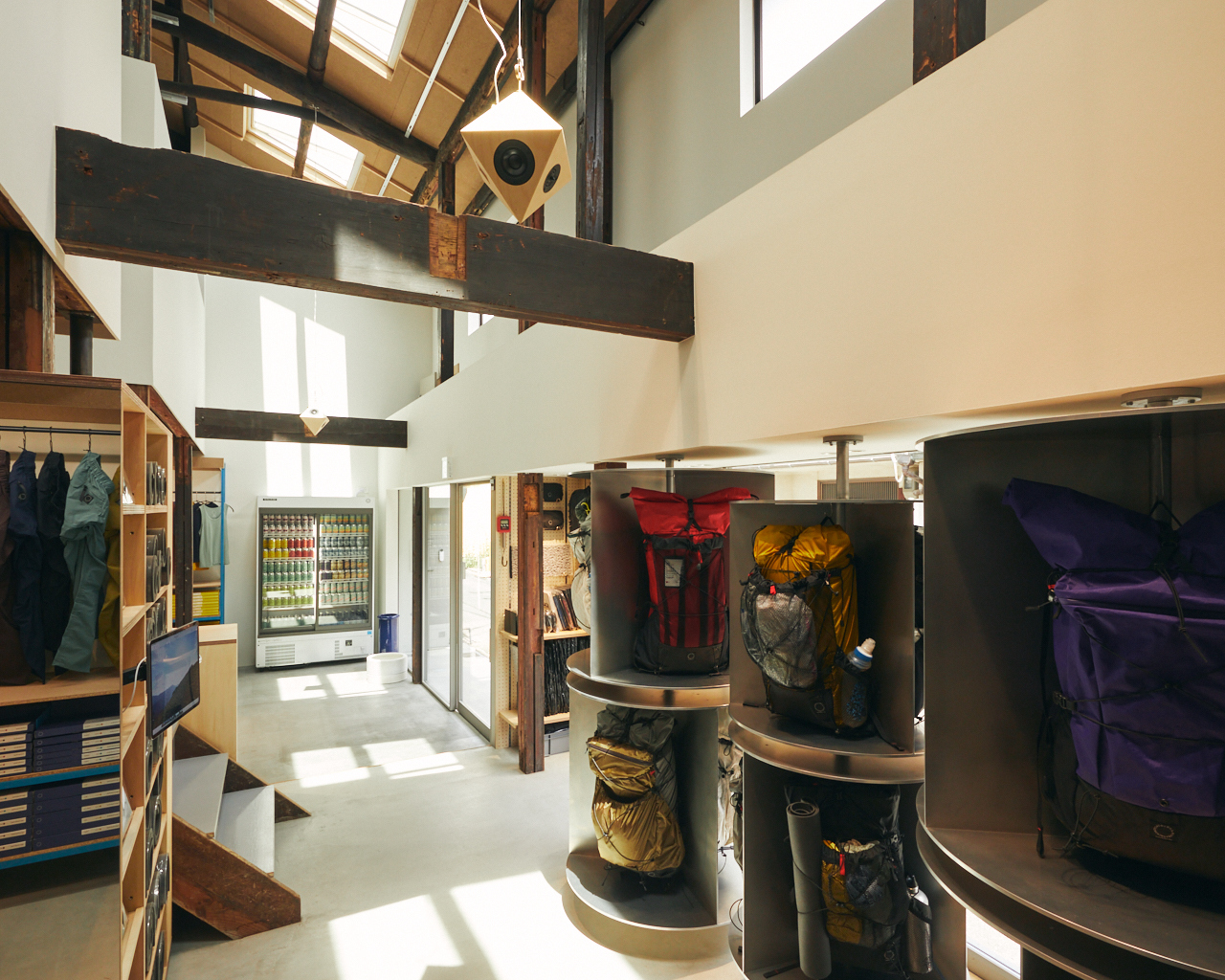
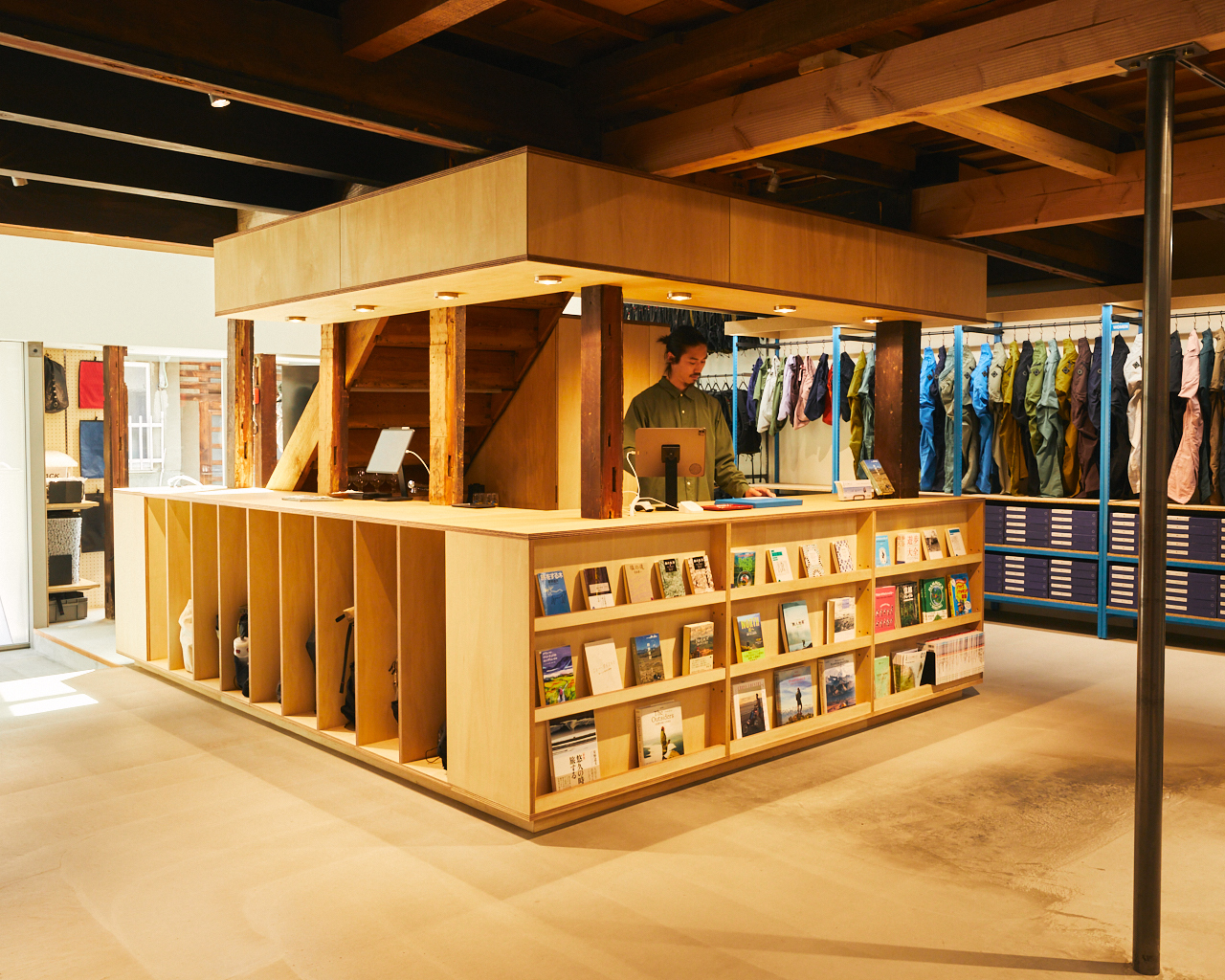
The Yamatomichi Kyoto shop, in Gojōrakuen district, Shimogyo-ku, Kyoto city. (photo credit: Hikaru Otake)
DIY upbringing
As a youngster, Jens spent his free time at home in Denmark experimenting with wood. His father was a woodworking teacher, and the workshop at home was Jens’s playroom. “I was making floors and furniture in my room from a young age,” Jens recalls. “We had so many woodworking tools at home that making, building and creating things was completely normal.”
It helped that woodworking ー two hours of class a week ー was part of Denmark’s middle school curriculum. By the time Jens was 14, he was comfortable handling the tools and machines in his father’s workshop on his own. “I relaid the floor in my room. My dad helped a little bit, but mostly I did it on my own,” he says.
Jens’s experience as a journalist has also influenced his renovation projects. To him, an old building isn’t just an inanimate structure. It’s a place with a story and a history. Drawing out that side when giving the space a second life is key, says Jens. “I like the history an old house has. It adds something. When people have been living in it for 50 or 100 years, it’s easy to knock it down and build something new. Anyone can do that. Repurposing and figuring out how to reuse it requires a different skillset, and I like doing that.”
For Yamatomichi’s Kajiwara Sanso, Jens directed his crew to strip the house to its wooden pillars and save the roof, which had recently been refurbished. He rearranged the floorplan, added insulation in the floors and walls, modernized the kitchen, and clad the exterior of the building in yakisugi, Japanese cedar planks that have been charred using a traditional process for added durability. Inside, he put down cedar floorboards and put up walls of wood-chip particle board normally made for facades. Given the building’s location, on a small mountain in Kamakura, Jens wanted the place to feel like a retreat.
He adopted a similar approach to Yamatomichi’s Toyooka Factory, though the changes were considerably less drastic. The 70-year-old former ironworks building was in decent condition when Jens spotted it. He directed the project, creating a sewing workshop on the first floor and office and common space on the second. The backpack production facility retains the industrial look of its origins but also doubles as an R&D site.
“With renovation, I focus on maximizing the site’s charm. In the mountains, it should feel like a mountain hut; in the city, I consider how it connects with the energy of its urban surroundings,” he says.
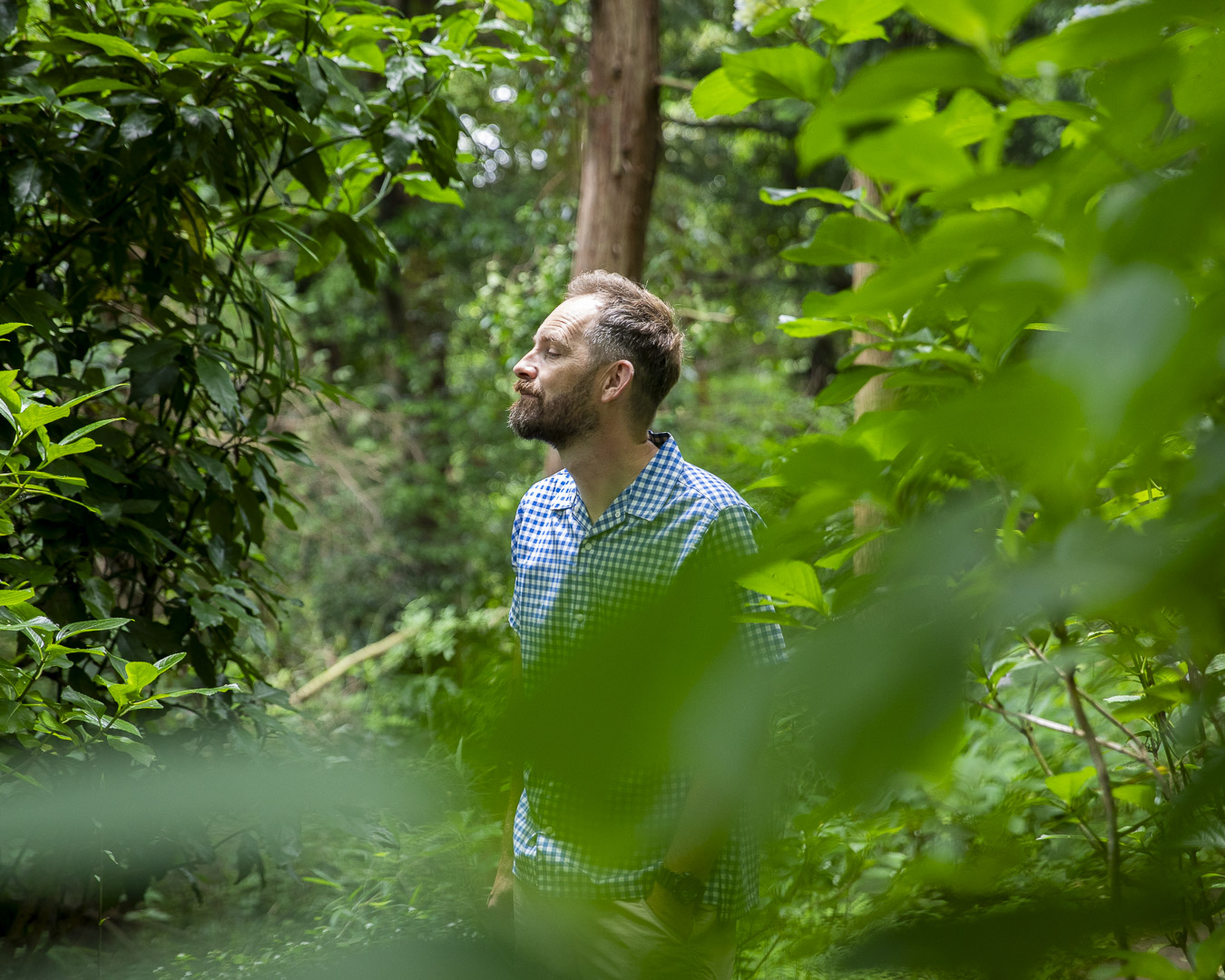
Personal evolution
Kajiwara Sanso is Jens’s first project solely as a space designer for Yamatomichi. He isn’t actively cutting any boards or hammering any nails. It’s given him a taste of ー and a greater appreciation for ー what architects go through. It’s also allowed him to stretch the limits of what was previously possible because of the craftsmanship of the Japanese carpenters and woodworkers he’s collaborating with. “Japanese artisans are amazing. I learn so much from them,” he says. “Their attention to detail ー that’s something that I respect. I wouldn’t be able to achieve that level of finesse.”
Working with Yamatomichi has had an impact on him in other profound ways. His lifestyle now more closely aligns with the ultralight hiking ethos. For a recent 10-day trip to Sri Lanka, Jens carried just 4 kg (9 lbs) of luggage. “Lightening your load frees your mind and body. It applies to travel, home, and life. I focus on the present, ready to act when needed. It’s very much like hiking: you prepare for sudden rain, but most importantly, you enjoy the moment.”
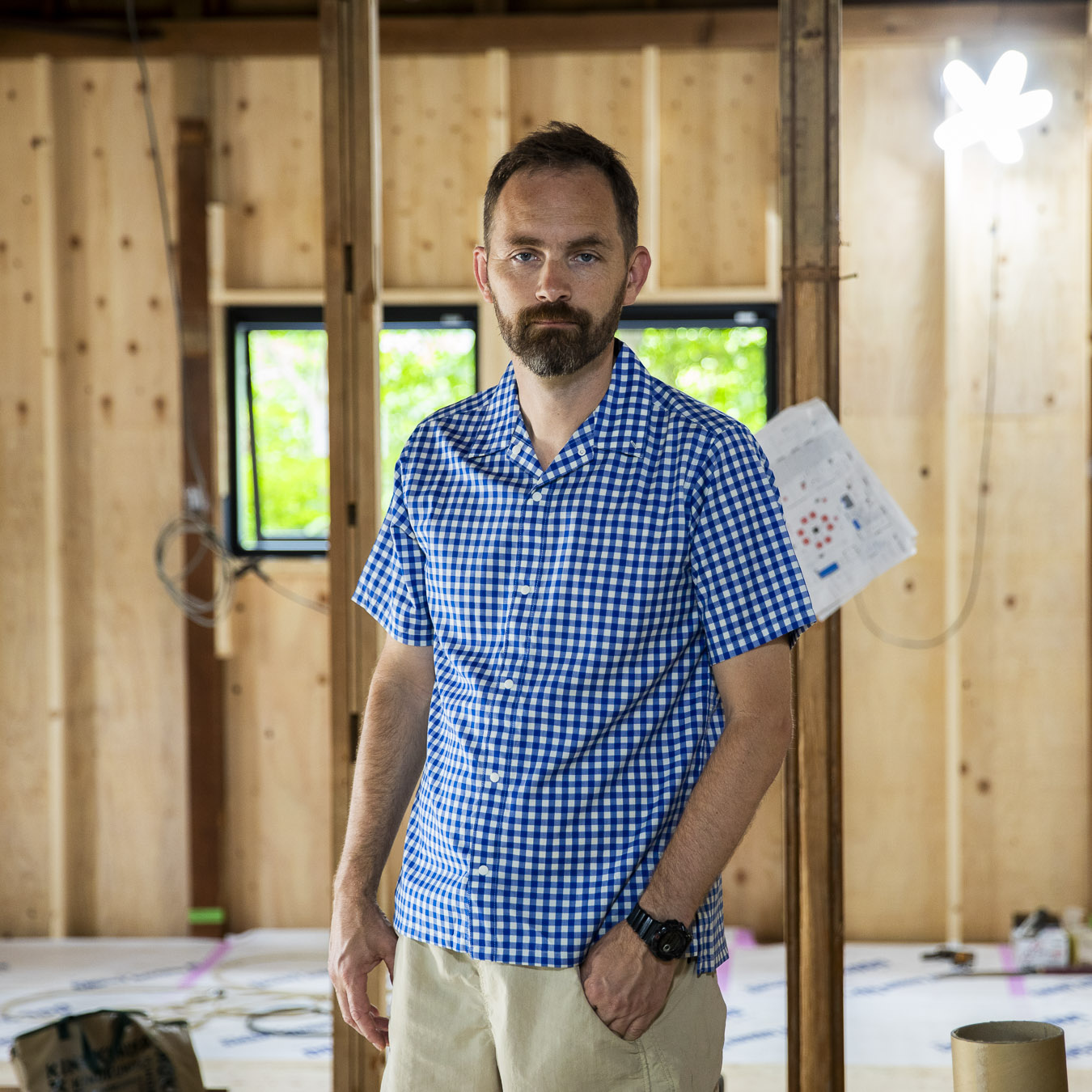
Born in Denmark, Jens moved to Japan in 2002. He is the Japan editor for UK art and design magazine Wallpaper* and contributes stories to other Japanese and international media and publications. He assists Yamatomichi with its international communications strategy and has led the renovations for several of the brand’s properties. In his free time, Jens hikes around the Kamakura mountains and occasionally attempts longer climbs in other parts of Japan. He lives in Kamakura, in a home that he renovated over four years and moved into in 2013.








